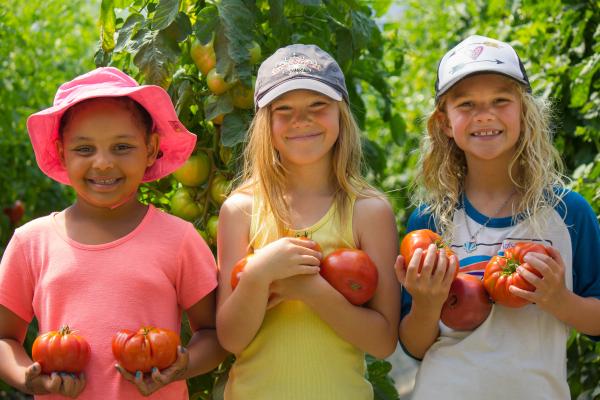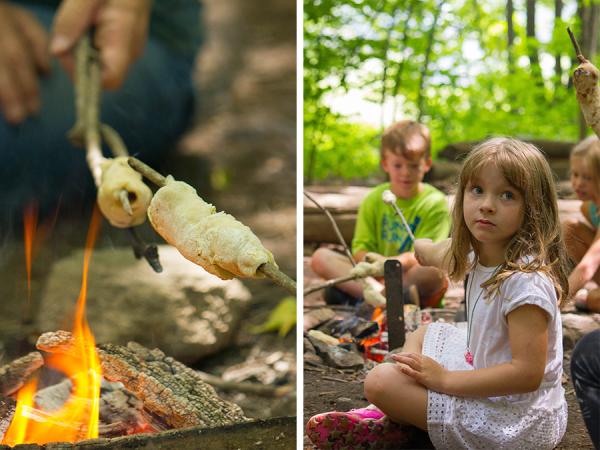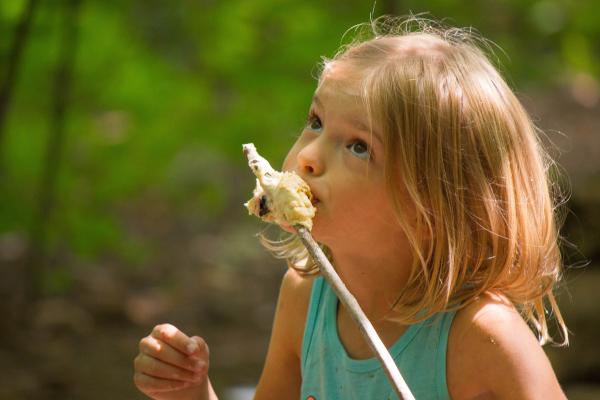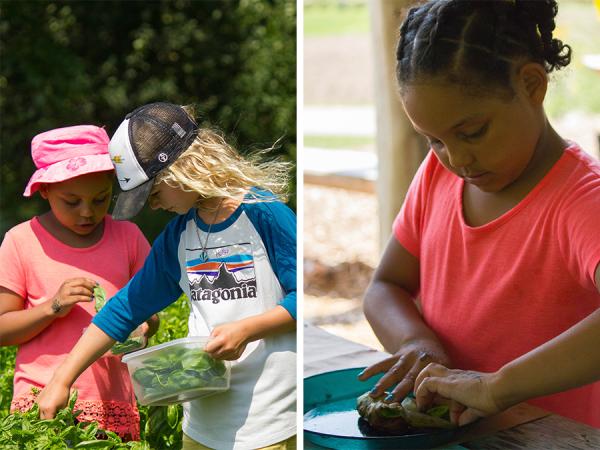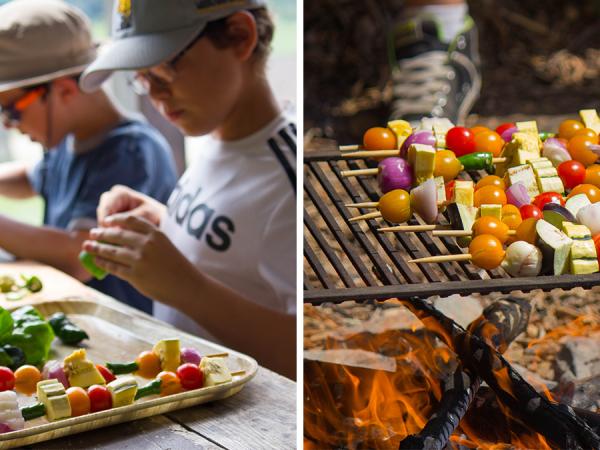Summer Camp Food Education Philosophy
Cooking over a campfire and eating vegetables right off the plant are two great pleasures in life — just visit a summer camp on the Farm for proof. You’d hear Exuberant cries for “more kale chips!”, squeaks of delight watching kabobs lightly char over a fire, or whoops of pride over a new culinary creation hear upon arrival.
A big part of Farm summer camp life is harvesting, making and eating food together. There are countless reasons why learning about food on a working farm is meaningful, but one of the most powerful is also the simplest: getting kids to try new things.
As an adult, when is the last time you experienced a new flavor? Can you remember? Kids at camp are trying new tastes every day — seaberries, nasturtium blooms, pestos made from just-picked herbs — and it’s our goal to get kids open to new experiences.
“If kids hear ‘kale salad,’ they might not get really excited,” educator Lindsay Whitaker explains, “But, maybe if we roast kale over a fire we built, we can work with the positive connotation of cooking s’mores over a fire, and maybe some of those barriers are lowered. Most of the time, kids try it and love it. And sometimes they don’t, and that’s ok, too.”
Trying new foods doesn’t have to be about exotic tastes – it can be just a change in preparation. And getting out of the kitchen and around a campfire or knee-deep in a garden is a great place to start. Here are easy ideas to get your imagination flowing:
Bread on a Stick
Making dough doesn’t need to be difficult — in fact, we make it outdoors with preschoolers all the time. Mix 3 tablespoons yeast with 1 tablespoon maple syrup (or other sweetener) in 2 cups warm water. Set aside for 5 minutes to allow for activation . Mix in ½ cup oil and 1 tablespoon salt. Slowly mix in 6 cups of flour, one cup at a time. If the dough is getting really dry, leave some out. Let rise for a few minutes. Or, just purchase raw pizza dough.
Now the experimentation begins! Divide up the dough, mush in a few berries, or whatever fruit is on hand, and wrap the dough around the end of a s’more-suitable stick. Pinch all the cracks closed and hold over a fire to bake. Once golden brown on the outside, let cool and eat on the stick. More seasoned campfire chefs may be able to slide the dough off the stick to consume. If you’ve eaten the cooked outer layers, and the inside is still gooey, just stick it over the fire again.
Spring Rolls
No campfire needed (although, try grilling them up if one is around!). All you’ll need for this one is cut veggies, spring roll wrappers from the market, and a dip for the final product. Don’t get caught up in julienned vegetables or the perfect soy sauce to rice wine vinegar ratio. Campers this summer ingeniously created the “Italian spring roll” — lettuce, chopped tomatoes, and basil tucked into a wrapper and dipped in balsamic vinegar.
The tricky part can be folding the wrapper. One tip from educator Flannery — dip the dry wrapper into water for just a couple seconds to soften it, then lay it on a flat surface to fill. (If you soak the wrapper too long, it will be more difficult to fold and more likely to rip.)
Veggie Kabobs
At once simple and immensely satisfying to make. Cut up whatever veggies are in the garden that need to be eaten and can be pushed onto a stick. Lay the kabobs on the campfire grate and carefully turn them periodically to cook evenly. Just leave enough room on the end of each stick so that you can handle it, or opt for tongs. Fold some kale leaves into the mix, spear some basil in between tomatoes, or cut up those oddly shaped squashes to include. There’s really no wrong way to go.
